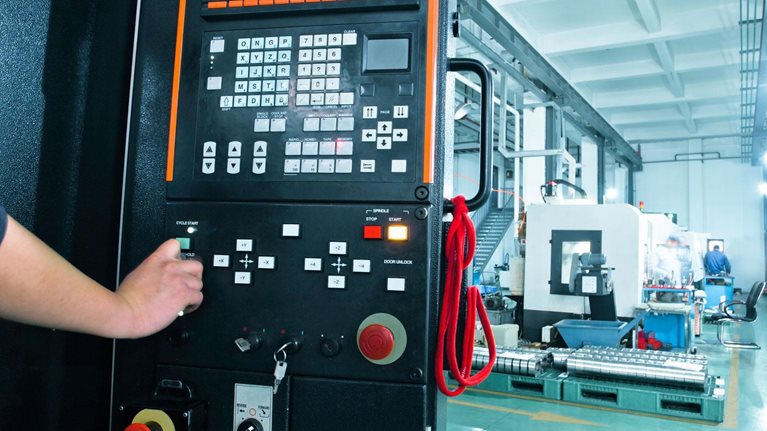Process manufacturers have been getting pressure from all sides in recent years as raw materials have become more expensive or difficult to source and growth has slowed to a crawl. Productivity growth for industrial companies in the European Union fell from an average of 2.9 percent over the 1996–2005 period to just 1.6 percent from 2006–2015, according to the Organisation for Economic Co-operation and Development (OECD). While there are some signs of a possible cyclical recovery, political uncertainty could continue to put a damper on trade.
Stay current on your favorite topics
Most manufacturers have already made the most obvious changes to streamline their operations, using traditional methods to eke as much productivity out of their supply chains and plants as possible. To do even more with less in a slow-growth and uncertain environment, however, companies must look for new ways to boost the productivity and profitability of their operations.
There’s one significant asset that manufacturers have not yet optimized: their own data. Process industries generate enormous volumes of data, but many have failed to make use of this mountain of potential intelligence. Historically, manufacturers have lagged other industries in their IT capabilities. However, thanks to cheaper computational power and rapidly advancing analytics opportunities, process manufacturers can put that data to work, gathering information from multiple data sources and taking advantage of machine learning models and visualization platforms to uncover new ways to optimize their processes from the sourcing of raw materials to the sale of their finished products.
Advanced analytics also help manufacturers solve previously impenetrable problems and reveal those that they never knew about, such as hidden bottlenecks or unprofitable production lines. There are three applications of advanced analytics in particular that together are powerful tools for maximizing the physical and financial performance of manufacturers’ assets and often-complex supply chains (Exhibit 1).

Predictive maintenance analyzes the historical performance data of machines to forecast when one is likely to fail, limit the time it is out of service, and identify the root cause of the problem. Yield-energy-throughput (YET) analytics can be used to ensure that those individual machines are as efficient as possible when they are operating, helping to increase their yields and throughput and reduce the amount of energy they consume. Profit-per-hour (PPH) maximization analytics, meanwhile, scrutinizes the thousands of parameters and conditions that have an impact on the total profitability of an integrated supply chain (from raw materials purchasing to final sales), providing intelligence on how best to capitalize on given conditions.
Together, these advanced analytics approaches can deliver EBITDA (earnings before interest, taxes, depreciation, and amortization) margin improvements of as much as 4 to 10 percent. They can also boost ongoing continuous improvement efforts at a time when manufacturers have seemingly exhausted other options for increasing productivity. Moreover, they offer a lever for competitive advantage, even for companies with overcapacity, by helping them better manage their production systems and optimally reallocate resources in real time.
Decreasing downtime in an always-on world
Machines break. That’s the first and probably oldest rule in manufacturing. It used to be the best way to manage that was hoping someone on the shop floor, using a combination of instinct and experience, would see the indications of an asset about to go down and repair it in time. However, with more (and more expensive) machinery to keep track of, continued pressure to increase uptime and productivity, and growing demand for flexible operations, hope is no longer a viable strategy.
Manufacturers can maximize the operating time of critical assets by leveraging big data to anticipate their failure. Predictive maintenance systems gather historical data (structured and unstructured, machine- and non-machine-based) to generate insights that can’t be observed with conventional techniques. Using advanced analytics, companies can determine the circumstances that tend to cause a machine to break and monitor input parameters so they can intervene before breakage happens—or be ready to replace it when it does—thus minimizing downtime. Predictive maintenance typically reduces machine downtime by 30 to 50 percent and increases machine life by 20 to 40 percent.
Oil and gas companies were early adopters of advanced analytics for predictive maintenance. One oil producer, for example, consistently faced problems with the compressors on its offshore production platforms. When one broke, the platform was forced to cease production altogether, costing the company $1 to $2 million a day. Engineers had tried for years to figure out a source of the failure with limited success. They suspected temperature or pressure of incoming fluids might be the cause, but were unable to find a correlation between either factor and the ultimate breakdown. Analyzing data from hundreds of sensors with information on 1,000 different parameters, advanced analytics revealed that high pressure and high temperature, together with several other factors, correlated with the breakdowns. The algorithm they developed could predict several weeks in advance that a compressor would go offline. While they could not prevent the failure, the company was able to decrease downtime from 14 days to just six by pre-positioning personnel and repair equipment onsite, saving millions of dollars for each occurrence.
Doing more with less
In the same way that predictive maintenance can improve the uptime of an individual asset, YET analysis can maximize its effectiveness. Even small percentage improvements in operational efficiency can significantly enhance earnings before interest and tax (EBIT). The YET approach does that by balancing yield, throughput, and material costs to maximize the profitability of each process step.
One global chemical corporation was facing variable throughput and low overall output at one of its plants in Europe. Its monomers furnace had a highly variable production rate and significantly suboptimal output. The plant’s sensors had produced a huge set of data on the furnace’s operations over 615 days of production: 600,000 samples each with 63 tags, totaling 40 million data points. Advanced data analysis identified critical throughput drivers and allowed a model of the process to be built. The model quantified the interdependence of key variables, where the company was previously only aware of qualitative correlations, and provided a better understanding of the process. A test run of the furnace confirmed the model’s findings.
Would you like to learn more about our Operations Practice?
The company’s experts had suspected some of the levers identified in the model could improve productivity. However, they had not had the tools or data to confirm it. With a new understanding of the process and its key drivers, the company set up experiments to optimize production. The result was an output increase of 18 to 30 percent, which represented a net contribution increase of around €5 million. Applying the YET analysis to the full plant showed a potential gain of €30 million.
Sometimes the changes suggested by a YET model can be simple. A steel producer, for example, had only to tweak a recipe to see a significant improvement. Other times the analysis will uncover the influence of parameters that will change over time. In those cases, the manufacturer may set up new standard operating procedures to be followed in various situations. However, the approach many manufacturers are taking is to build a performance dashboard of YET analysis in the control room fed with live data from operations, enabling production personnel to change operating conditions as indicated by the analysis.
Optimizing complex production networks
Whereas predictive maintenance and YET analyses are designed to improve the performance and profitability of individual machines or processes, PPH maximization can optimize the interaction of those machines and processes. Encompassing every step from purchasing to production to sales, this advanced modeling technique dynamically maximizes profit generation in complex production systems and supply chains, encompassing every step from purchasing to production to sales. Unlike human planners, this advanced analytics approach typically factors in as many as 1,000 variables and 10,000 constraints to help manufacturers figure out what to buy, what to make, and how they should make it to yield the most profit in each period.
Large chemicals makers can be prime beneficiaries of PPH maximization. They must manage an enormous amount of complexity: volatile costs and prices, multiple plants, and products that can be made in various ways from diverse (and often nonlinear) combinations of materials. One global chemicals company was selling a broad range of goods to a global marketplace through a mixture of spot and long-term contracts. Decisions on production and sales were based on a complex and arcane system of transfer prices, arbitrarily set by different regions and departments. Organizational responsibilities were scattered across multiple business units and corporate functions. Management felt that suboptimal production and distribution decisions were leaving a lot of money on the table.
They were right. A mixed-integer programming model, encompassing more than 500 variables, explored non-linear cost curves and more than 3,000 constraints related to production capacities, transportation, and contracts—as well as hundreds of production steps (with alternative routes and feedback loops); non-linear price curves and raw material cost structures; and intermediate inventories.
With the help of the model, the company identified immediate tactical changes that delivered cost savings of several million euros a year. For example, it started manufacturing an essential intermediate product on an underused line instead of buying it from a third party, and it reduced raw material costs by shifting the production of another key intermediate to equipment that gave higher yields. They identified medium-term strategic opportunities to expand capacity by increasing the throughput of some critical production assets. Moreover, they grew sales by raising the production capacity for some product categories.
The analytics approach also revealed some counterintuitive improvements. The model suggested that eliminating the production of the PVC produced by its solvent plant would increase profitability. The company had been selling this low-grade PVC to China—a commoditized market with high logistical costs. By shifting the intermediate material required to produce PVC to manufacture another product, the company could make more profit per hour. Had the owner of the PVC line of business been charged with making that decision (which he had been before PPH modeling was introduced), that switch might never have been suggested.
All told, these changes allowed the global chemical company to boost its EBIT by more than 50 percent in a commodity industry historically marked by low returns on sales.
The data-driven manufacturer
Applying advanced analytics to manufacturers’ data can produce insights to optimize the productivity of individual assets as well as the total manufacturing operation. Deployed in conjunction with each other, these tools enable operators to maximize their productivity and profitability.

Pushing manufacturing productivity to the max
For example, a major metal plant has used a combination of advanced analytics tools as the foundation of a continuous improvement program. Real-time performance visualization in operators’ stations has enabled the company to increase production rates in one of its lines by 50 percent. Engineers are gaining new insights into the failure characteristics of major pieces of equipment and are making ongoing improvements to increase reliability. The company expects to improve total production by 30 percent without a substantial increase in operating costs by using condition monitoring and predictive maintenance in conjunction with process controls and automated material tracking.
In an increasingly complex manufacturing environment, this ongoing data-driven transformation can enable companies to dynamically optimize their tactical planning and make better strategic decisions for the long term. However, advanced analytics tools alone will not magically transform process manufacturing. The value of these new tools is only realized when they complement human skills and expertise. These new approaches make it possible for manufacturing professionals to engage in more fact-based discussions, comparing the real impact of different parameters on business outcomes before making decisions and, in many cases, to consider counterintuitive actions that might improve productivity or profitability.
One manufacturer was able to increase earnings 55 percent by applying changes that were indicated by advanced analytics and data modeling (Exhibit 2).

How to get there from here
As with most technology-enabled changes, new analytics tools alone are not enough to deliver such improvements. Manufacturers must make several changes on people, process, and technology fronts to ensure they can not only aggregate and analyze their data, but also get the most out of the findings.
Mastering data management
Advanced analytics and modeling require the retrieval and cleansing of data structured appropriately for the platform being used. This is the heavy lifting of advanced analytics and can take up as much as half of a data scientist’s time—significantly more effort than many companies may realize. It also demands IT expertise—employees with the knowledge and skills to aggregate data from sensors (including their location, type, and accuracy) and the ability to store the information in various platforms.
Blending analytic skills and domain expertise
Applying advanced analytics to manufacturing operations requires a combination of data scientists, advanced analytics platform specialists, and manufacturing subject matter experts (in areas such as process technology, asset maintenance, and supply chain management)—as well as people who can serve as liaisons between these various constituencies.
Piloting success
An analytics transformation starts by identifying specific processes to serve as pilots—real problems and opportunities that advanced analytics likely will be able to address—to demonstrate the viability and value of analytics and quickly realize benefits.
Some companies find it useful to set up analytics labs within their operational units where cross-functional teams of specialists can bring together their analytics backgrounds and frontline know-how. The lab can serve as a launching pad for these new initiatives and a source of learning and best practices as the manufacturer scales its analytics program. By prioritizing high-value use cases, the advanced analytics program can often be at least partly self-funding.
Rethinking business processes
One train operator used advanced analytics to predict the breakdown of its locomotives’ battery pack. But until the company transformed its maintenance procedures, that failure notification did little good. The company had to rework its processes, its deployment of technicians, and its spare-parts supply chain to make a real impact. Such is the case in manufacturing where decades-old processes will need to be reworked so that the analytics insight can make an impact. Advanced analytics can only achieve their full benefit when the new solutions are integrated into day-to-day operations and the way of working.
Factoring in change management
To make a substantial financial impact from improvements in analytics, manufacturers must also consider the human aspect. Helping employees adapt to using analytics effectively is the most significant enabler of advanced analytics–enabled transformation. Everyone must understand at a high level how these tools can assist them so that they can trust them. Employees must also understand how they will impact their roles and potentially make their lives better. If there is no buy-in, they will reject the tools as a threat rather than an opportunity, and manufacturers will be unable to advance from data to insight to actual business benefit.
Introducing advanced analytics to manufacturing operations is not a one-off exercise. These analytics will need to be repeatedly deployed to achieve the desired outcomes. Thus, manufacturers must approach this as an ongoing enterprise transformation requiring changes in mind-sets and ways of work from everyone: top leadership, managers, process engineers, down to shop-floor operators. Process manufacturers that can mobilize their organizations to embrace this approach—continually applying and learning from advanced analytics, machine by machine, process by process, and plant by plant—will capture the full value of these new technologies and achieve new breakthroughs in productivity and profitability.


